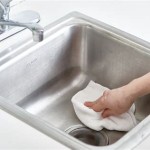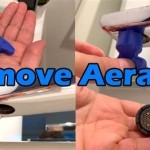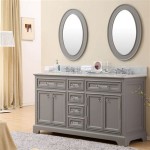How To Fix a Clogged Kitchen Sink
A clogged kitchen sink is a common household problem that can disrupt daily routines. Food scraps, grease, and other debris accumulate over time, restricting water flow and eventually causing a complete blockage. Addressing a clogged sink promptly prevents further complications, such as unpleasant odors, standing water, and potential drainpipe damage. This article provides a comprehensive guide to diagnosing and resolving kitchen sink clogs using various methods, from simple DIY solutions to more involved techniques.
Identifying the Cause of the Clog
Before attempting any fixes, it is crucial to identify the probable cause of the blockage. Several factors can contribute to a clogged kitchen sink. Food particles, such as coffee grounds, rice, and pasta, are frequently washed down the drain, accumulating in the pipes. Grease and fats solidify as they cool, adhering to the pipe walls and trapping other debris. Hair, while more commonly associated with bathroom drains, can also find its way into the kitchen sink. Soap scum, mineral buildup from hard water, and even small objects accidentally dropped into the drain can also contribute to blockages.
The location of the clog also influences the chosen approach. A clog located near the drain opening may be easily accessible and removable. A deeper blockage within the drainpipe requires more extensive methods to dislodge. If multiple drains are affected, the problem may reside in the main drain line, potentially indicating a more complex plumbing issue.
The symptoms of a clogged sink can offer clues about the nature of the problem. Slow draining is often the first sign, indicating a partial blockage. A complete blockage, where water does not drain at all, suggests a more severe obstruction. Gurgling sounds emanating from the drainpipe can indicate trapped air or a partial vacuum, often associated with clogs. Foul odors rising from the drain are a common symptom of decomposing food waste trapped within the pipes.
DIY Methods for Clearing a Clogged Sink
Several readily available household items can often effectively clear minor clogs. These methods are generally safe and environmentally friendly, making them a good first step in resolving a kitchen sink blockage.
Hot Water: A simple yet often effective solution is flushing the drain with very hot water. Heat water in a kettle or pot until it is near boiling. Carefully pour the hot water directly down the drain, avoiding contact with skin. Let the water sit for a few minutes to dissolve grease and loosen debris. Repeat the process if necessary. This method is particularly effective for clogs caused by grease or soap buildup.
Baking Soda and Vinegar: This combination creates a chemical reaction that can break down clogs. Pour one cup of baking soda down the drain, followed by one cup of white vinegar. Allow the mixture to fizz and bubble for approximately 30 minutes. After 30 minutes, flush the drain with hot water. The baking soda and vinegar react to create carbon dioxide, which helps to dislodge the blockage. This method is effective for a variety of clogs, including those caused by grease, soap scum, and food particles.
Baking Soda and Salt: Similar to the baking soda and vinegar method, this alternative uses salt to enhance the cleaning power. Pour one cup of baking soda down the drain, followed by one-half cup of salt. Let the mixture sit for several hours, or preferably overnight. Flush the drain with hot water in the morning. The salt acts as an abrasive, helping to loosen stubborn debris.
Plunger: A plunger is a standard tool for clearing clogs in sinks and toilets. Ensure there is enough water in the sink to cover the cup of the plunger. Create a tight seal around the drain opening with the plunger cup. Plunge vigorously up and down for several minutes, maintaining the seal. Remove the plunger and check if the water drains. Repeat the process if necessary. A sink plunger (with a flat lip) is preferable for kitchen sinks. Ensure the overflow drain is covered to maintain suction.
Dismantle and Clean the P-Trap
If the DIY methods fail to clear the clog, disassembling and cleaning the P-trap is the next step. The P-trap is the curved section of pipe located under the sink. Its purpose is to trap debris and prevent sewer gases from entering the home. However, it is also a common location for clogs to form.
Preparation: Place a bucket or container under the P-trap to catch any water or debris that may spill out. Wear rubber gloves to protect your hands. Have a wrench available to loosen the slip nuts that connect the P-trap to the drainpipes.
Disassembly: Carefully loosen the slip nuts connecting the P-trap to the sink drain and the drainpipe. Once the nuts are loose, gently remove the P-trap. Be prepared for water and debris to spill out.
Cleaning: Inspect the P-trap for any visible clogs. Remove any debris by hand or with a tool, such as a wire hanger. Rinse the P-trap thoroughly with water. Inspect the drainpipes connected to the P-trap for any blockages as well.
Reassembly: Once the P-trap and drainpipes are clean, reassemble the P-trap. Ensure the slip nuts are tightened securely, but avoid overtightening, which can damage the pipes. Run water into the sink to check for leaks. If leaks are present, tighten the slip nuts further or replace the washers if necessary.
Using a Drain Snake (Auger)
A drain snake, also known as an auger, is a flexible tool used to dislodge clogs located deeper within the drainpipe. It consists of a long, coiled wire with a handle at one end. Drain snakes come in various lengths and sizes, depending on the type of drain being cleared.
Insertion: Carefully insert the drain snake into the drain opening. Feed the snake down the drainpipe, rotating the handle as you go. The snake will encounter resistance when it reaches the clog.
Breaking Up the Clog: Continue rotating the handle to break up or dislodge the clog. Apply gentle pressure as you rotate the snake. You may need to pull the snake back slightly and re-insert it to effectively break up the blockage.
Removal: Once you have broken up or dislodged the clog, slowly retract the drain snake from the drainpipe. Clean the snake thoroughly after each use. Run hot water down the drain to flush away any remaining debris.
Types of Drain Snakes: There are different types of drain snakes available, each suited for specific applications. A manual drain snake is operated by hand and is suitable for clearing minor clogs. A powered drain snake uses a motor to rotate the cable, providing more power for clearing stubborn blockages. A toilet auger is designed specifically for clearing clogs in toilets and has a protective sleeve to prevent scratching the porcelain.
When to Call a Plumber
While many kitchen sink clogs can be resolved using DIY methods, some situations require the expertise of a professional plumber. If the above methods fail to clear the clog, the blockage may be located deep within the main drain line or involve a more complex plumbing issue.
Recurring Clogs: If the kitchen sink clogs frequently, it may indicate an underlying problem, such as damaged pipes or a buildup of debris in the main drain line. A plumber can diagnose the cause of the recurring clogs and recommend appropriate solutions.
Multiple Clogged Drains: If multiple drains in the house are clogged simultaneously, it may indicate a problem with the main sewer line. This requires professional attention to prevent potential damage to the plumbing system and potential health hazards.
Suspected Pipe Damage: If there are signs of pipe damage, such as leaks or cracks, it is essential to call a plumber immediately. Attempting to repair damaged pipes without proper knowledge and tools can worsen the problem. Corrosion, tree root infiltration, or shifting soil can damage drain lines.
Lack of Experience: If one is uncomfortable attempting DIY plumbing repairs, it is best to call a plumber. Improper techniques can damage the plumbing system and result in costly repairs.
Calling a plumber ensures the problem is diagnosed accurately and resolved effectively, preventing further damage and ensuring the long-term functionality of the plumbing system. A professional plumber can provide expert advice and guidance on maintaining the plumbing system to prevent future clogs and other plumbing issues.

How To Unblock A Kitchen Sink 7 Methods Qs

How To Unclog A Kitchen Sink The Home

How To Unclog A Sink Herrmann Services

How To Unclog A Kitchen Sink The Home

How To Unclog A Kitchen Sink Drain

How To Unclog A Sink The Experts Simple Steps Drain

How To Unclog A Kitchen Sink Using Baking Soda And Vinegar

How To Unclog A Kitchen Sink Drain

How To Unclog A Kitchen Sink Family Handyman

How To Unclog A Double Sink Clumsy Crafter







